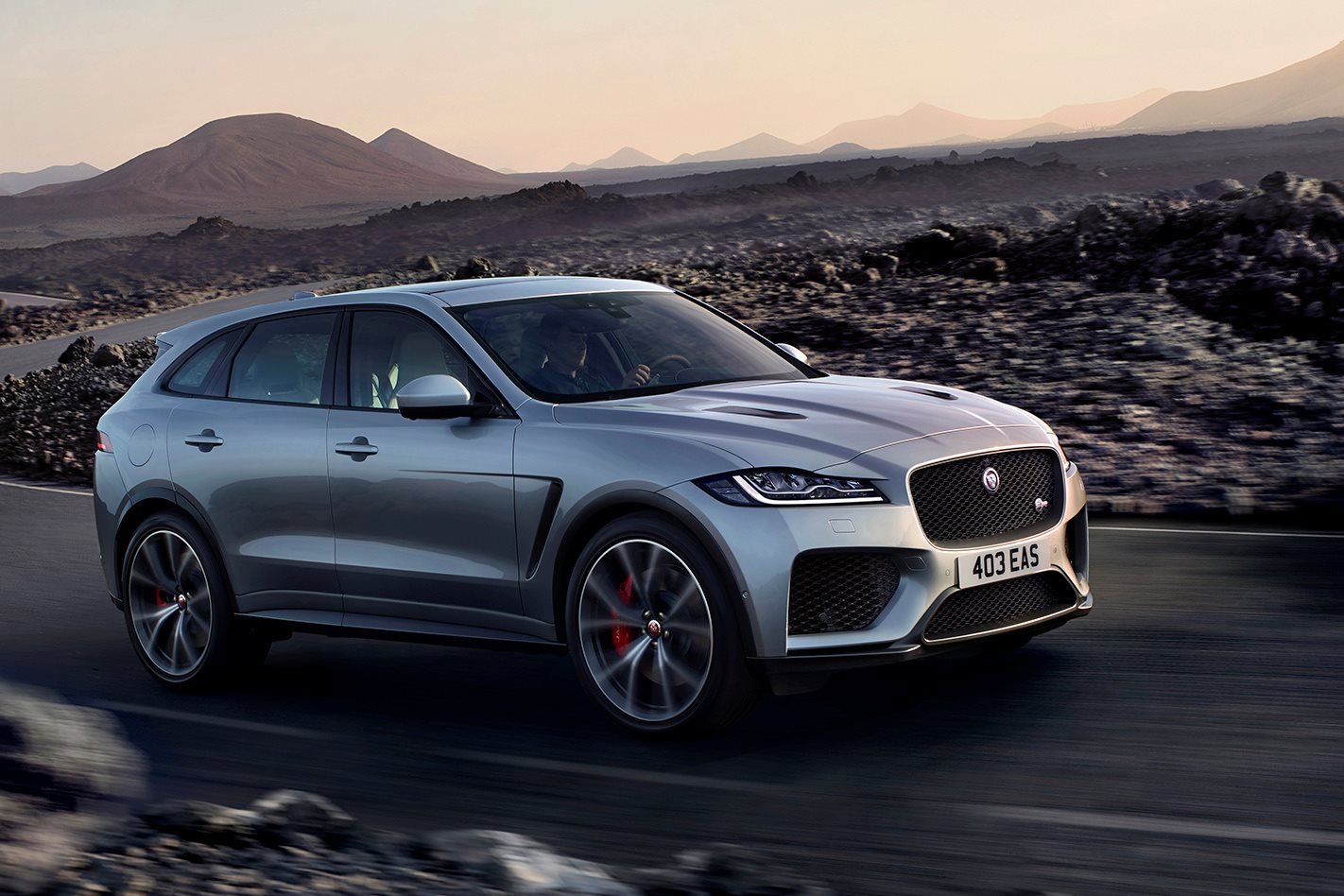
After a year’s delay, Jaguar has at last launched itself into the increasingly-crowded luxury performance SUV segment with the F-Pace SVR, which makes its international sales debut this week ahead of an Australian arrival in June.
Propelled by a 5.0-litre supercharged petrol V8 and boasting a bespoke chassis setup to endow it with sportscar-like handling, the Jaguar F-Pace SVR will line up against the likes of the Mercedes-AMG GLC 63, BMW X3 M, Audi SQ5, Alfa Romeo Stelvio Q and Porsche Macan Turbo. Stiff competition, no doubt, but Jaguar’s offering has more than a few weapons in its arsenal to give it a fighting chance. Here are the highlights:
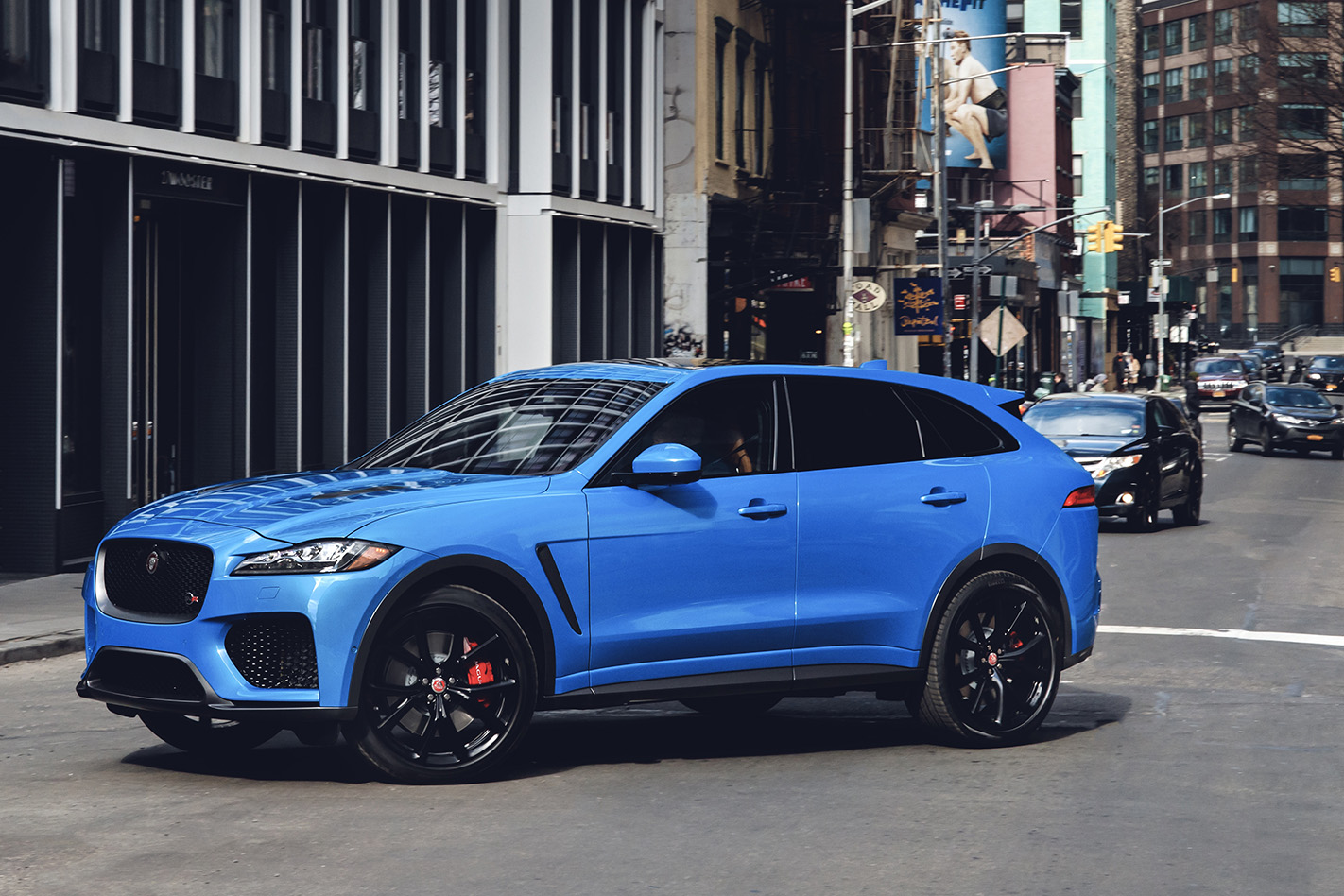
Bent-eight, it’s great
The centerpiece of the SVR is, naturally, its big-capacity V8 powerplant. Displacing 5.0 litres and augmented by a belt-driven supercharger, it churns out 404kW between 6000-6500rpm, and 680Nm between 2500-5500rpm. Healthy numbers, and if you’re the kind for whom size matters, you can take comfort in the fact the SVR has the biggest engine of its segment – the next-largest rival is the GLC 63 with its 4.0 litre turbo V8, while the rest of the pack use six-cylinder engines ranging from 2.9L (Alfa Romeo Stelvio Q) to 3.6L (Porsche Macan Turbo).
Performance is brisk, with the F-Pace SVR reaching 100km/h in 4.3 seconds on its way to a maximum speed of 283km/h.

Looks fast, is fast
Though its ground clearance is the same as a vanilla-spec V6 F-Pace, the F-Pace SVR adopts a sportier stance thanks to its more aggressive – and aerodynamically functional – bodykit. The front bumper features swollen air intakes to direct air to the engine’s heat exchangers, a tailgate roof spoiler reduces lift at high speed, and recontoured side skirts rear bumper incorporate diffuser-like protrusions on the underside to smooth out airflow and further cut stability-spoiling lift.
Gigantic 21-inch alloys are the standard wheel for the SVR and amply fill out its huge wheelarches, though even larger 22-inch items are available for those who want them.
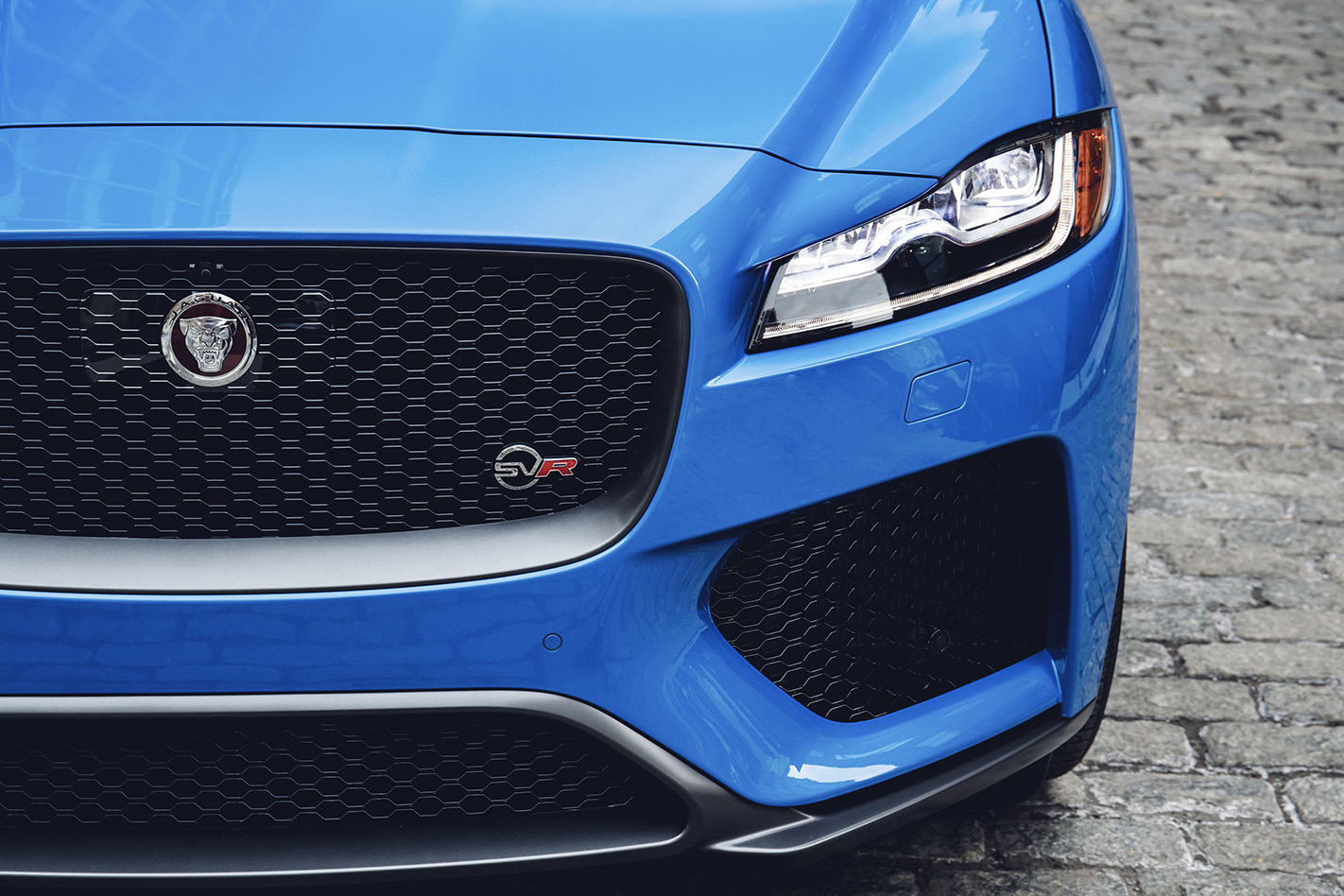
Big brakes
Going fast necessitates stopping fast, and the SVR’s brake package has been beefed up to accommodate. Big two-piece 395mm front rotors are gripped by chunky four-piston Brembo calipers on the front, while two-piece rotors measuring 396mm are fitted to the rear axles and clamped by sliding calipers. With the hubs of each rotor made of aluminium versus the standard car’s all-steel items, the SVR’s brake package actually weighs substantially less in total despite offering greater stopping power – and each aluminium front caliper shaves 2kg versus the standard F-Pace hardware.
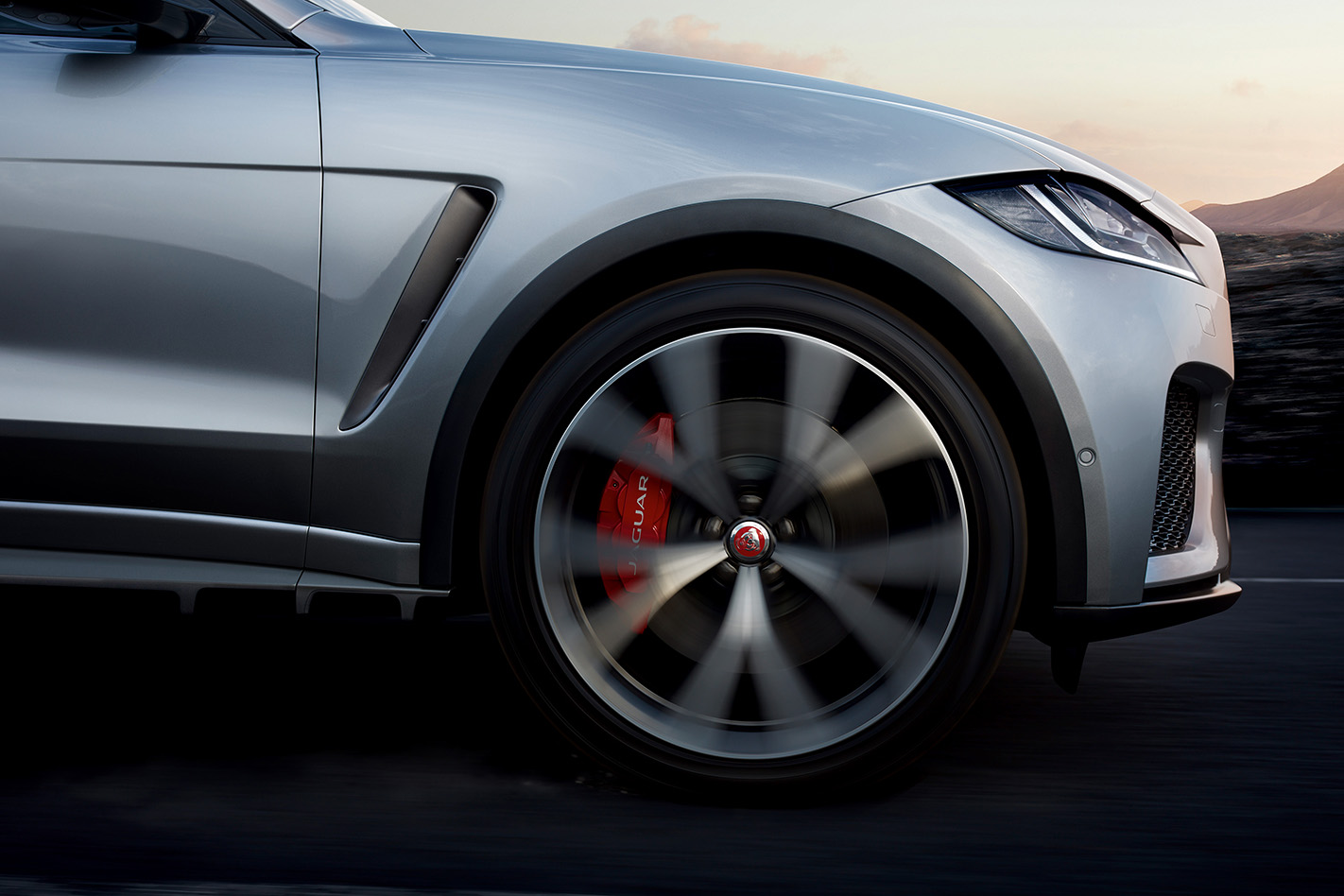
Trackstar diet
The brakes aren’t the only area of the F-Pace SVR to see some lightweighting. The 22-inch forged alloy wheels are 2.4kg lighter at the front and 1.7kg lighter at the rear compared to standard F-Pace rolling stock, and the SVR-specific exhaust also trims 6.6kg from the kerb weight thanks to less internal baffling. The front seats are also lighter too, and the total weight differential compared to a regular V6 F-Pace amounts to roughly 70kg.
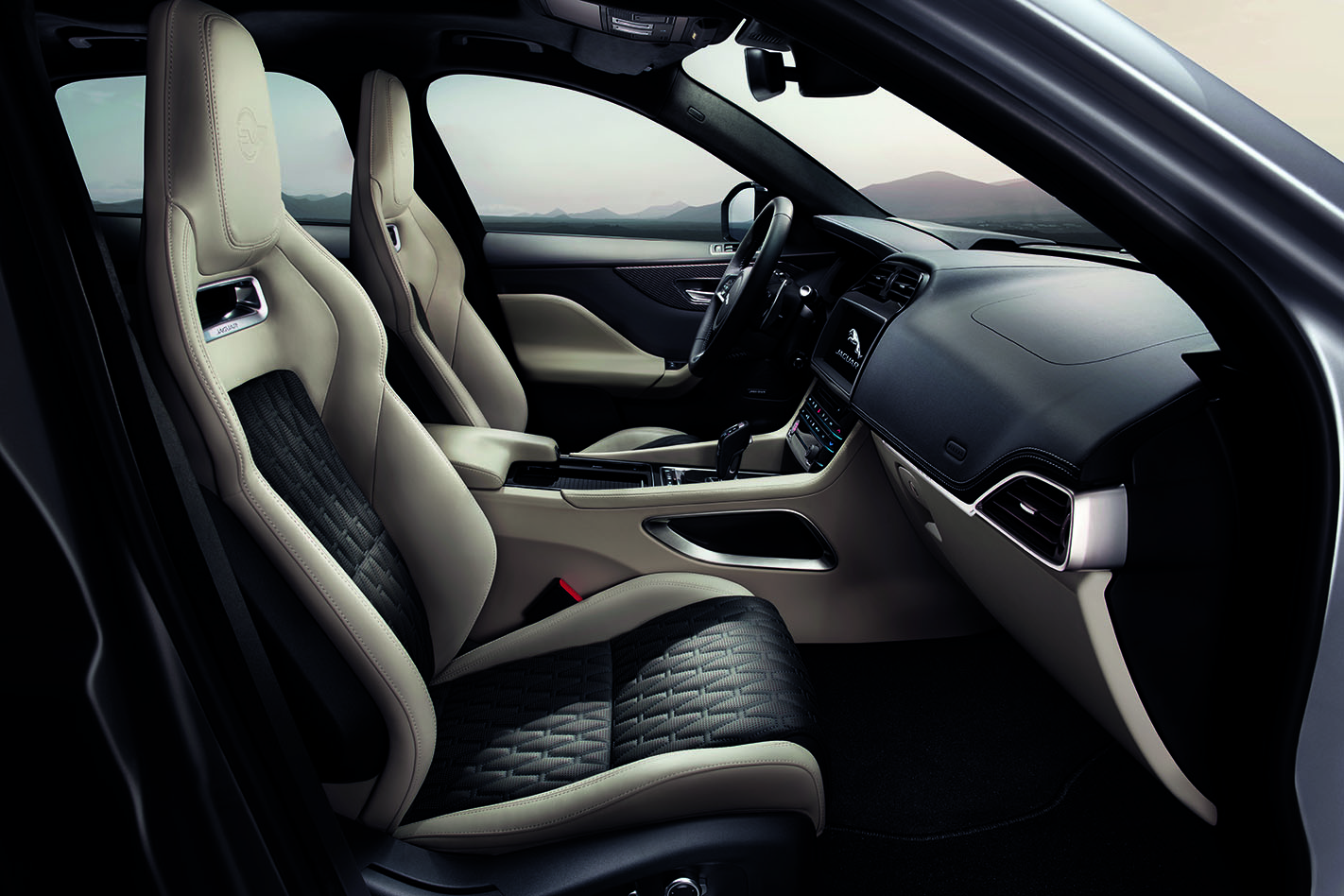
Bespoke interior
On the inside, the SVR has a number of specific enhancements that separate it from the rest of the F-Pace family. The most noticeable are the front seats, with fixed headrests and deeply-sculpted bolsters designed to hold driver and passenger firmly in place during spirited driving.
The driver also has a fat-rimmed SVR-exclusive steering wheel to hang onto as well, which has a pair of shift paddles behind should they wish to manually change cogs. Manual shifting can also be accomplished via the pistol-style gear selector on the centre console – another SVR hallmark and one that replaces the unloved rotary transmission dial of the regular F-Pace.
Instrument graphics also differ, and on the centre console there’s another SVR touch that most drivers will likely appreciate: a button that puts the exhaust bypass valves into their angriest setting with a single prod.
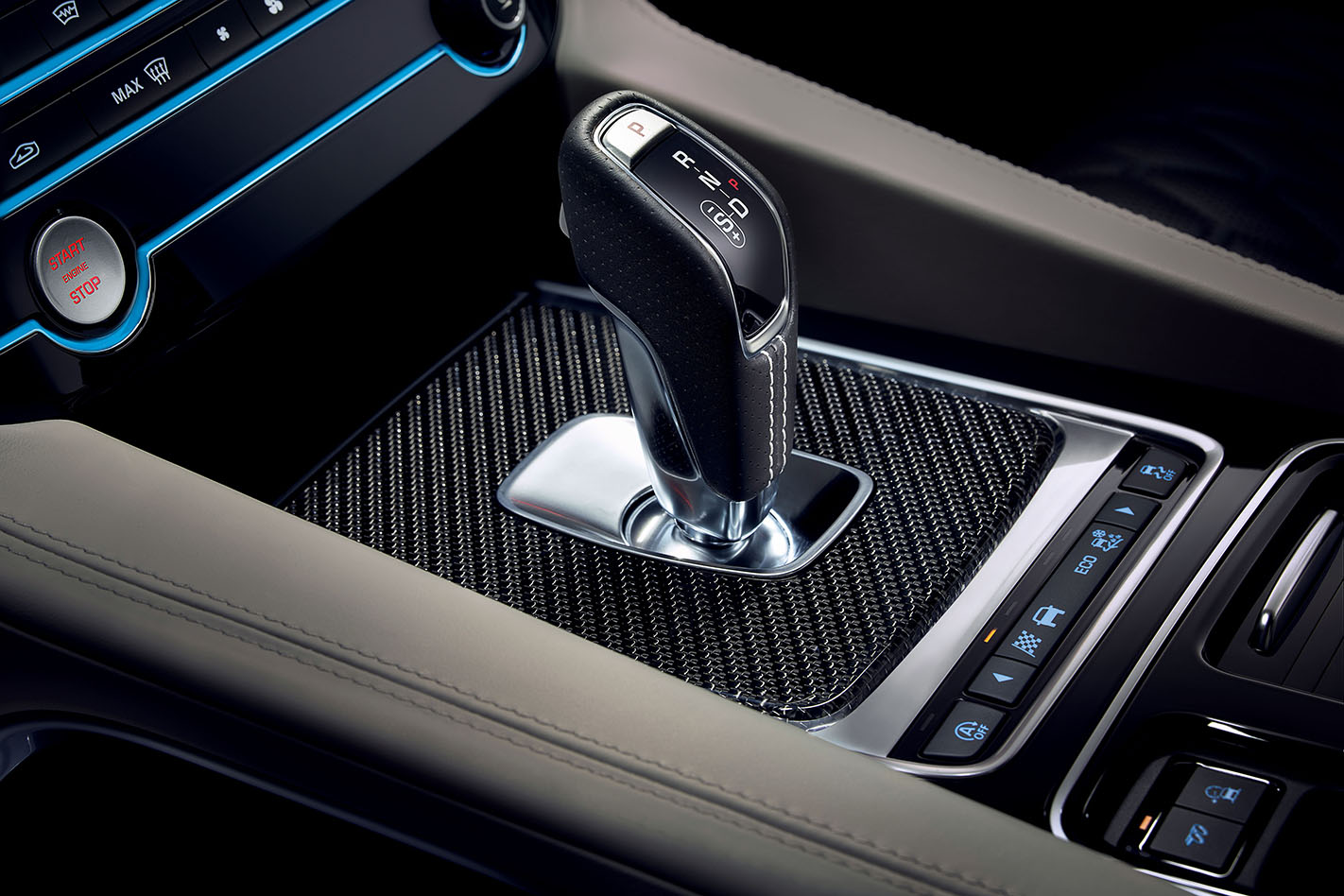
Smart undercarriage
Jaguar is fiercely proud of its reputation for building fine-handling cars, and the company has spared little expense in applying its corner-carving know-how to the F-Pace SVR.
Though the transmission is a conventional 8-speed automatic (no dual-clutch hardware here), the SVR’s gearbox is tuned for fast shifting and an ultra-direct feel when the car is put into Dynamic mode. It’s also hooked up to an AWD transfer case that is calibrated to be as rear-biased by default, normally taking the bulk of the engine’s power and torque to the back wheels to impart a neutral feel to the chassis and help stave off understeer when accelerating.
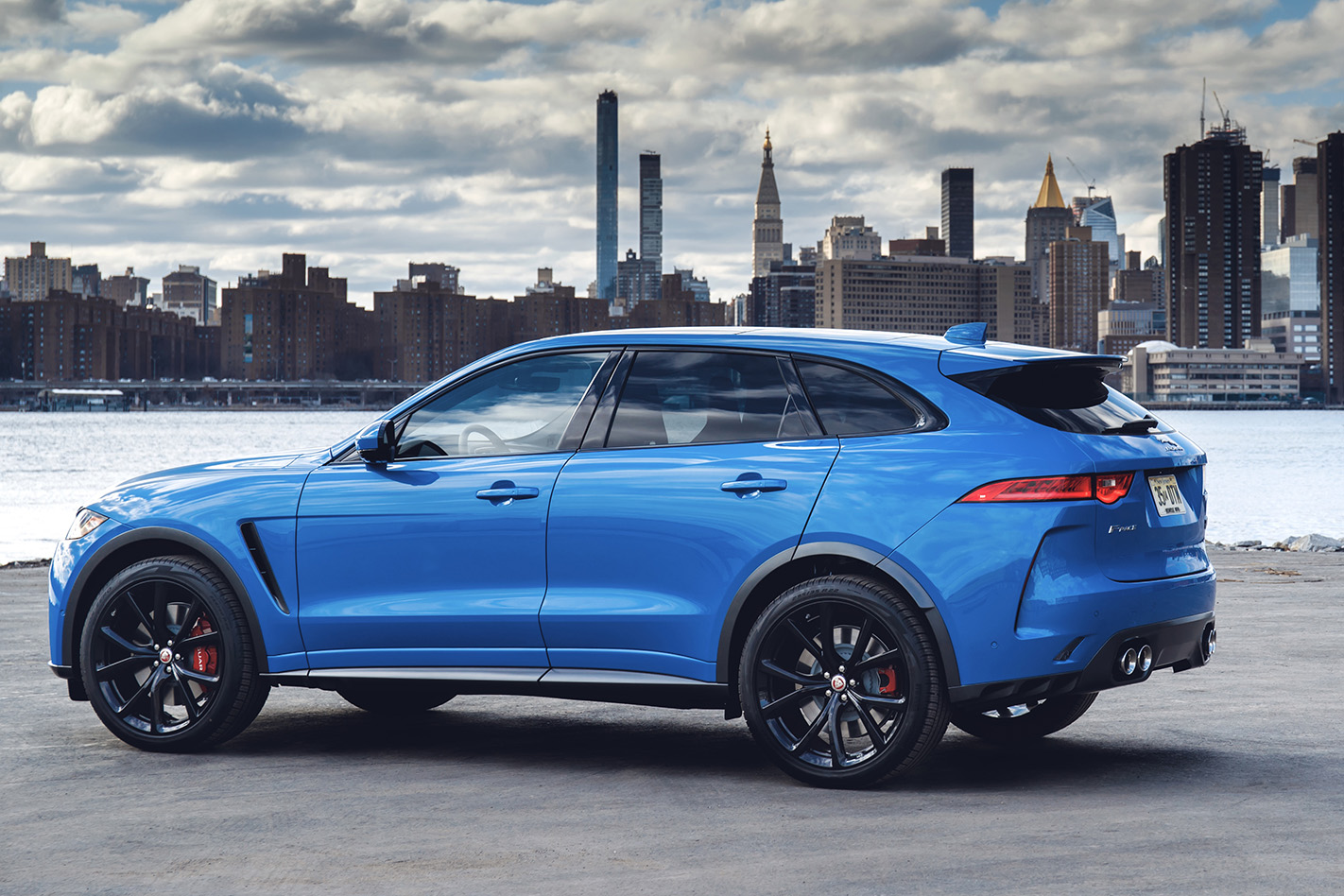
Power starts being directed to the front when rear wheel slippage is detected (or anticipated by the on-board electronics), but the SVR won’t direct more than 50 percent of its torque to the front wheels – the objective here being to maintain a rear-driven feel at all costs. A torque-vectoring rear differential is also standard, and helps sharpen turn-in response by overdriving the outside rear wheel.
Adaptive dampers also work to constantly adjust suspension behavior according to conditions or driver demand, and can be switched between a conventional setting and a harder-edged Dynamic mode. The electric power steering, too, has been re-tuned with an SVR-specific steering map, and the chassis is made tauter through revised suspension bushings.



